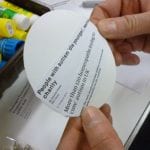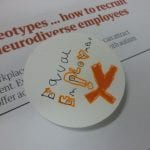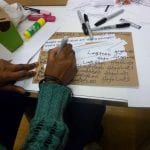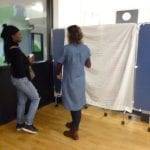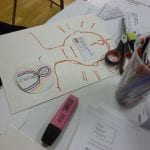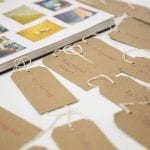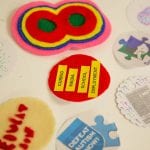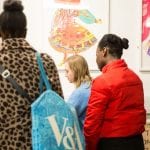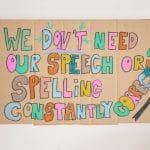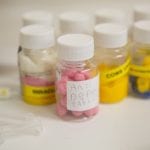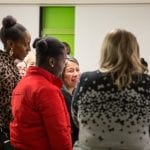I am currently in my final year of Inclusive Arts Practice MA at the University of Brighton and previously completed a BA (Hons) in Photography. I enjoy darkroom printing and have been doing so since I was four years old in my grandfather’s loft.
In my professional background I have been working with young people at various organisations including The Prince’s Trust, The Challenge, National Youth Agency, Geffrye Museum, Design Museum and the British Museum. Through this I have gained experience in outreach and facilitation.
At the British Museum my role includes recruiting and supporting young people to develop more inclusive museum tours using movement, sketching and storytelling whilst building confidence and employability skills. I’m currently supporting volunteers of all ages to deliver Touch Tours to blind and visually impaired visitors, coordinating the LGBTQ Tour volunteers and volunteers who work with children and young people.
I’ve worked with Emergency Exit Arts and the Bishopsgate Institute for ‘The Only Way is Ethics (TOWIEthics)’ HLF project creating a toolkit for working with young people on heritage projects.
In June 2013 I founded a charity for young dypsraxic adults called ‘Dyspraxic Me’. We meet once a month and take part in lots of different activities from sports, cooking, to art. We also organise an annual event for Dyspraxia Awareness Week in October. Through this I was awarded a place on the Shaw Trust ‘Power 100’ 2018 list of the most influential and inspirational disabled people in Britain.
I am passionate about making the arts and heritage sector accessible and inclusive to all. Using art to support museum interpretation through socially engaged and inclusive practice. During my MA Inclusive Arts Practice I collaborated with 8 participants over 7 weeks through arts-based research. We answered my research question ‘How should we interpret and curate the history of labelling people with learning difficulties (neurodiversity)? Looking at the charitable, medical, educational, media and personal narratives’ we looked at objects within the Wellcome Collection Library and studied newspaper articles and neurodivergent characters in TV and film to see how neurodiversity is being portrayed today and in the past. The group wanted to explore accessible activism. Highlighting the negative language and portrayal still being used by the media and society.
For my creative response I curated an inclusive exhibition. Visitors were able to write on whiteboard protest signs to protest around the subjects shown in the exhibition and think about what accessible protest would mean. Visitors were able to leave a message to Percy F. the first diagnosed dyslexic; then in 1896 labelled as ‘Congenital Word Blindness’. Around the exhibition there were ‘talking labels’ and a ‘talking book’ where visitors could find out more about the artworks displayed. Visitors were welcome to take a seat on the ‘language’ cushions. Walls were painted cream instead of white to make the space less harsh to be in. During the research I tried to create art that would be accessible for others and myself to make. For my creative response I wanted to learn a new photographic process, printing cyanotype on glass. I am still learning the technique as it takes a long time to perfect. Each of the prints represents the themes we spoke about during the research.
I would like to further and develop my work in making museums inclusive spaces for all.
We held a Neurodiversity event at the Free Space Project to showcase the research. During the event we showcased the artwork we’ve made together and had conversations around neurodiversity.
Visitors to the event also had the opportunity to take part in a creative activity. Creating an accessible protest on how neurodiversity is portrayed in the media.
These are the photographs taken at our showcase event in January 2019. We displayed the research and had an open invitation for visitors to come and see our work and to hear about neurodiversity.
Social media:
Contact:
J.Starns1@uni.brighton.ac.uk




